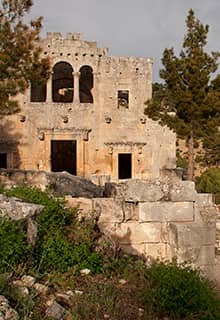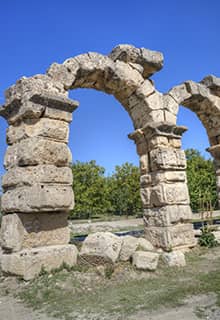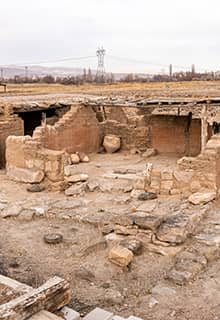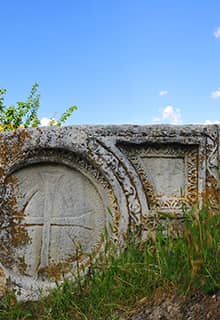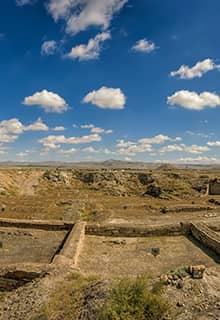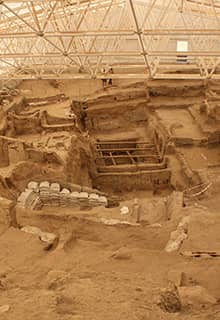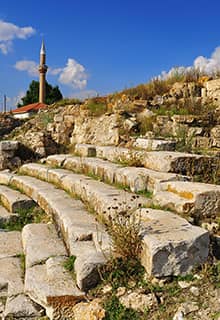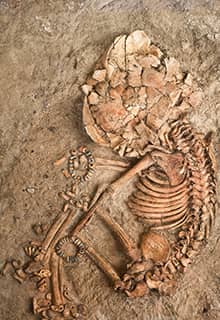

historical sites Central
Türkiye
Gordium, Ankara (Gordion)
Perhaps one of the most interesting ancient cities in Türkiye is Gordion, the capital city of Phrygian, a great culture and civilization of the 9th – 8th centuries BCE. Gordion is located 100 km east of Ankara, near Polatlı called Yassıhöyük today. Perhaps name Phrygian is less heard, however their famous king Midas with golden touch and donkey ears, and Gordios who tied the knot which Alexander the Great could not untie the know and cut it with his sword. Recent research in Gordion revealed that the Phrygian language appears at least 50 years before Greek. The city is a mound, consisting of archaeological layers one on top of another, the museum at the site contains wonderful pieces from the excavation, and to so-called Midas Tumulus is a masterpiece of this period.
Pessinus, Eskişehir
Pessinus ancient city lies 150 km west of Ankara, Ballıhisat Village near Sivrihisar. It was situated along the ancient Royal Road that connected Sardes with two important cities of Persia, Susa, and Persepolis. The most fame came from being the home of the goddess Matar or Cybele, the Phrygian Mother of the Gods who was also venerated by the Greeks and Romans. The temple of Kybele at Pessinus was discovered in 1967. It is surprisingly small, the cella measures only 8 x 8 meters. Next to the sanctuary was a theater, which also served as the stairs leading to the temple and this combination is unique in the ancient world. The Great goddess was represented sitting on a chariot drawn by lions. According to legend, she had fallen from the sky as a stone, and the name Pessinus may indeed mean something like "castle where the fall has taken place". In 204 CE, the meteorite was taken by Rome and a new temple was built right in the center of Rome, on the Palatine.
- Dorylaeum, Eskişehir
Kanesh (Kültepe), Kayseri
Kanesh was called “Neşa” by the Hittites and was perhaps their first capital city before they moved to Hattusa. Located some 20 km north east of Kayseri. The site of Kültepe, which was the capital of the ancient Kingdom of Kanesh and center of Assyrian trade colonies in the 2nd millennium BCE. The topographical position allowed Kültepe to be a center of ancient politics and trade. Kültepe thus became a key place of culture and commerce between Anatolia, Syria, and Mesopotamia by the end of the 3rd millennium BCE. The first writing arrived at Anatolia through Assyrian merchants and hundreds of clay tablets were unearthed in Kültepe. The site consisted of 2 parts, the upper mound called Kanesh and the lower called Karum. A visit to Kültepe will be completed with a visit to Anatolian Civilizations Museum in Ankara.
Çatalhöyük, Konya
Catalhöyük is 40 km east of Konya, close to the modern town of Çumra. When it was first excavated in 1960, Çatalhöyük was identified as the first urban city settlement in the world interpreting some of the rooms discovered at Çatalhöyük as temples and complicated social organization of Çatalhöyük distinguishes this place from other Neolithic settlements. Hundreds of Anatolian Mother Goddess’ statues, wall paintings and several other finds unearthed at Çatalhöyük can be seen in the Anatolian Civilizations Museum in Ankara. The excavations revealed 18 layers of Neolithic settlements dating between 7400 – 6200 BCE at the Eastern Mound. The houses were made out sun dried bricks, and there were no streets and alley between the houses and entrance to the houses were provided from the roofs. The excavations showed that people of Çatalhöyük were hunters, fisherman, they domesticated wheat and barley and brought obsidian from considerable distances.
Derbe, Konya
Derbe is located 120 km to south east of Konya. The city is mentioned by Strabo the geographer. The apostles, St. Paul and St. Barnabas came to Derbe after escaping a disturbance and survive the stoning in Iconium -Konya-, and successfully evangelized there. They returned there after being stoned again in Lystra. On these experiences, Paul commented, "We must through many tribulations enter the kingdom of God." He and Silas later visited Derbe again. These makes Derbe a pilgrimage place for Christians and it is also a very pleasant place to visit, just at the skirts of the Tauros Mountains.
- Heraclea Cybistra, Konya
- Laodicea Combusta, Konya
- Kalehöyük, Kırşehir
- Mokissos, Kırşehir
- Melid, Malatya
Binbirkilise, Karaman
Binbirkilise, -thousand churches- is located in the town of Karaman, some 90 km south east of Konya. As the name suggests, it is famous for several Christian Churches, mostly dating from 4 – 8th centuries CE. From the architecture viewpoint, the domed basilicas of Syriac Orthodox type are quite interesting. In some churches, primarily in Madenşehri, remains of murals can be seen. Also rare relicts from the Hittites, Roman and Hellenistic period are found in the surroundings.
- Faustinopolis, Niğde
Tyana, Niğde
Tyana is located at Kemerhisar, 25 km south of Niğde and was the main city of southern Cappadocia. Situated on a fertile plain, but also controlled the main route from central Anatolia to the Cilician Gates.
A relief from the 8th century BCE, cut in a rock near Ivriz, shows a modest king Warpalas of Tyana praying to the figure of a storm god Tarhunza, who is shown as a true giant. One of Tyana's sons, Apollonius, became a famous Pythagorean philosopher. The aqueduct from the Roman period is still in a good preservation.
- Alişar Hüyük, Yozgat
- Kerkenes, Yozgat
- Tavium, Yozgat
- Nyssa, Aksaray
- Purushanda, Aksaray
- Nicopolis, Sivas

